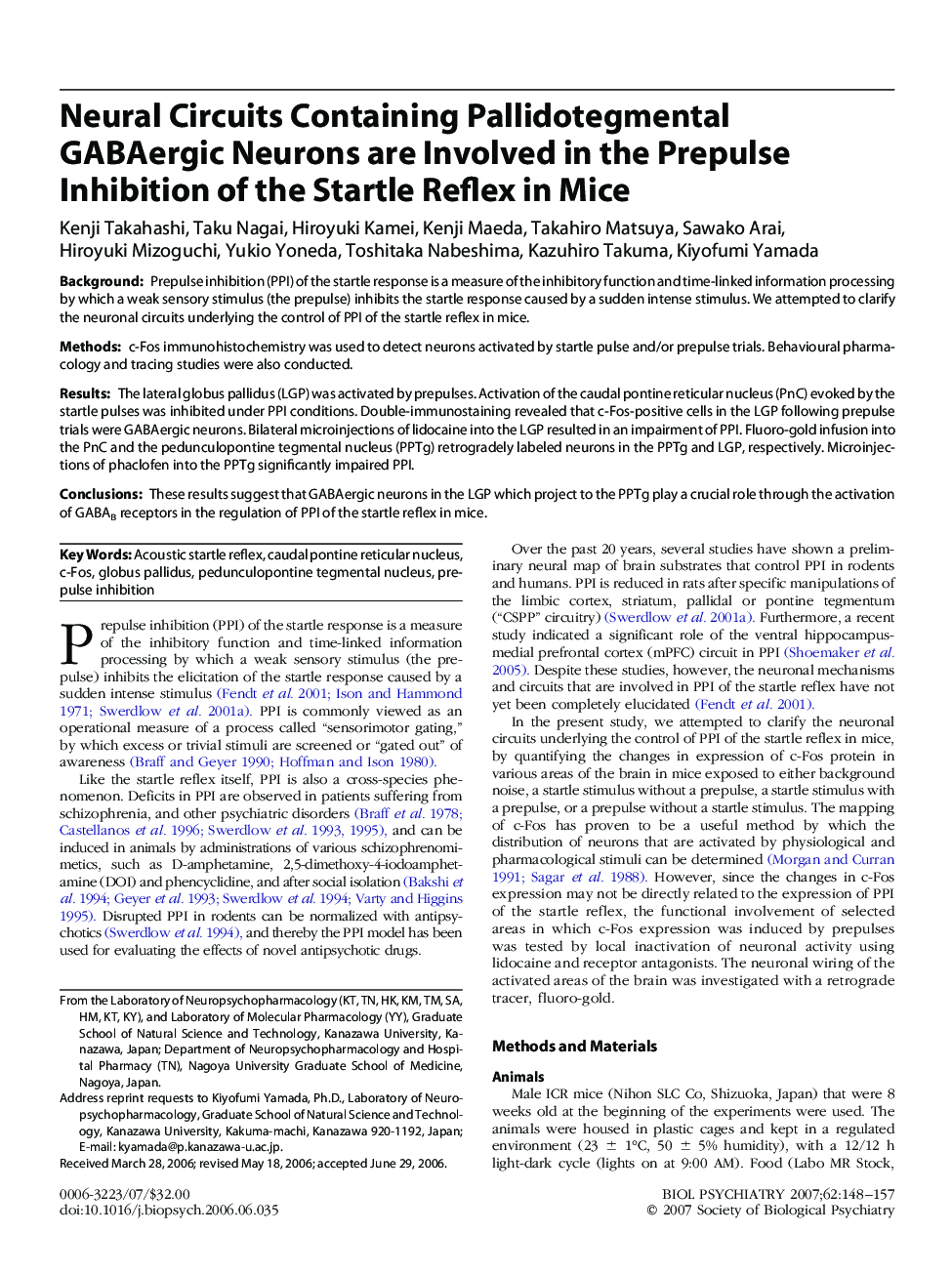| Article ID | Journal | Published Year | Pages | File Type |
|---|---|---|---|---|
| 4180962 | Biological Psychiatry | 2007 | 10 Pages |
BackgroundPrepulse inhibition (PPI) of the startle response is a measure of the inhibitory function and time-linked information processing by which a weak sensory stimulus (the prepulse) inhibits the startle response caused by a sudden intense stimulus. We attempted to clarify the neuronal circuits underlying the control of PPI of the startle reflex in mice.Methodsc-Fos immunohistochemistry was used to detect neurons activated by startle pulse and/or prepulse trials. Behavioural pharmacology and tracing studies were also conducted.ResultsThe lateral globus pallidus (LGP) was activated by prepulses. Activation of the caudal pontine reticular nucleus (PnC) evoked by the startle pulses was inhibited under PPI conditions. Double-immunostaining revealed that c-Fos-positive cells in the LGP following prepulse trials were GABAergic neurons. Bilateral microinjections of lidocaine into the LGP resulted in an impairment of PPI. Fluoro-gold infusion into the PnC and the pedunculopontine tegmental nucleus (PPTg) retrogradely labeled neurons in the PPTg and LGP, respectively. Microinjections of phaclofen into the PPTg significantly impaired PPI.ConclusionsThese results suggest that GABAergic neurons in the LGP which project to the PPTg play a crucial role through the activation of GABAB receptors in the regulation of PPI of the startle reflex in mice.
